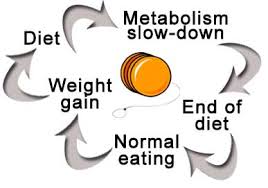It is more and more common to see many youth athletes pass through the doors of gyms in attempt to become more athletic, usually, to improve sporting performance for their chosen sport. Thankfully the old myths about weight training stunting growth have been disproved and more parents understand the benefits of S&C for their children, I know at Focus we now have a number of promising young athletes on a daily basis.
Coaching an athlete at an early age whether as their strength & conditioning coach or as their actual sports coach holds massive responsibility. At a young age you can literally raise the ceiling of an athlete’s potential or severely hinder their chances of becoming elite by instilling poor movement or even worse by making them resent training.
Whilst I am not the authority on Youth Athlete Strength & Conditioning, I am observing (through social media) a lot of mistakes I feel that are being made in the area and wish to make suggestions of what should take priority when training youth athletes.
- Strength Testing for Youth athletes is essentially pointless – I see lots of gyms that strength test their young athletes. However, young athletes will naturally get stronger as they grow and go through adolescence. Testing athletes and posting their new 1RMs as if you’re the best coach in the world is ego driven rather than the best thing for the young person your coaching. A 14 year olds bench press will more than likely increase in the space of 6 months even if they had performed no training simply due to them growing.
- Coaching should be done in person, not on spreadsheets – Youth athletes even more so than senior athletes have to manage their training loads efficiently. Coaches have to be prepared to change sessions at the last-minute and be flexible with programming to adjust to the young athletes workload. Stress of school, exams, sports and relationships can all affect young athletes and adding huge physical stress on top of that is not beneficial. Having the best programs laid out on excel spreadsheets or PDFs may help sell your services to the parents but you owe it to the young athlete to work with them not have them work for you.
- Get to know the young person you are coaching – You often hear the term ‘coachable’ being sued when talking about an athlete. Getting to know the person you are coaching is the quickest way of them to become coachable, You find out what makes them tick and incorporate that in sessions so they want to come back and put in the work.
- MOVEMENT, MOVEMENT, MOVEMENT – It is much more important to coach good movement to young athletes than aim at making them super strong. They will develop strength as they grow and can always work on it but poor movement patterns are much harder to re-teach once they are an adult. Strength training is important to teach them to safely absorb force so by all means strength train your youth athletes but always reinforce good movement patterns, landing mechanics and speed mechanics.
To summarise coach the PERSON not the athlete. Remember they have more going on in their lives than your gym session. Be ready to adjust sessions and don’t live off spreadsheets. It may look great and be a good sell to their parents but all those numbers and charts are useless if poor movement is being taught or executed at a young age.







